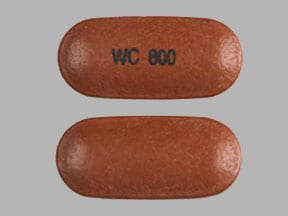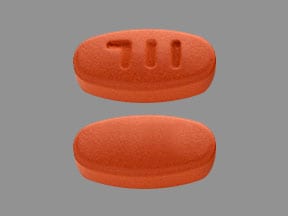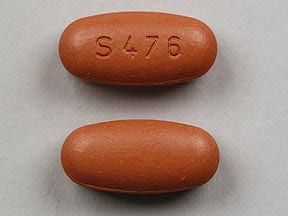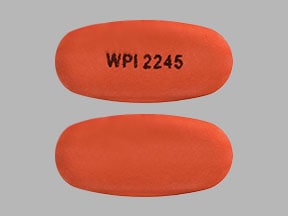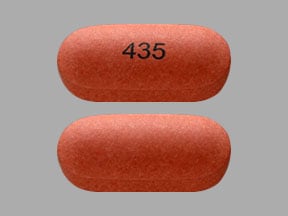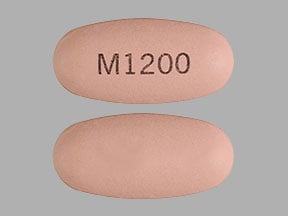Dosage Forms
Excipient information presented when available (limited, particularly for generics); consult specific product labeling.
Capsule Delayed Release, Oral:
Delzicol: 400 mg
Generic: 400 mg
Capsule Extended Release, Oral:
Pentasa: 250 mg [contains brilliant blue fcf (fd&c blue #1), fd&c yellow #10 (quinoline yellow)]
Pentasa: 500 mg [contains brilliant blue fcf (fd&c blue #1)]
Capsule Extended Release 24 Hour, Oral:
Apriso: 0.375 g [contains aspartame]
Generic: 0.375 g
Enema, Rectal:
SfRowasa: 4 g/60 mL (60 mL) [sulfite free; contains edetate disodium, sodium benzoate]
Generic: 4 g (60 mL)
Kit, Rectal:
Rowasa: 4 g [contains edetate disodium, potassium metabisulfite, sodium benzoate]
Generic: 4 g
Suppository, Rectal:
Canasa: 1000 mg (30 ea, 42 ea)
Generic: 1000 mg (30 ea)
Tablet Delayed Release, Oral:
Asacol HD: 800 mg
Lialda: 1.2 g
Generic: 800 mg, 1.2 g
Pharmacology
Mechanism of Action
Mesalamine (5-aminosalicylic acid) is the active component of sulfasalazine; the specific mechanism of action is unknown; however, it is thought that mesalamine modulates local chemical mediators of the inflammatory response, especially leukotrienes, and is also postulated to be a free radical scavenger or an inhibitor of tumor necrosis factor (TNF); action appears topical rather than systemic
Pharmacokinetics/Pharmacodynamics
Absorption
Rectal: Variable and dependent upon retention time, underlying GI disease, and colonic pH; Oral: Tablet: ~20% to 28%, Capsule: ~20% to 43%
Metabolism
Hepatic and via GI tract to N-acetyl-5-aminosalicylic acid
Excretion
Oral, suppository: Urine (primarily as N-acetyl-5-ASA, ≤12% as unchanged drug); feces (unabsorbed mesalamine)
Enema: Feces (primarily); urine (10% to 30%)
Time to Peak
Capsule: Apriso: ~4 hours; Delzicol: ~10 hours; Pentasa: 3 hours
Foam: Mezera [Canadian product]: ~1 hour
Rectal: Pentasa, Salofalk [Canadian products]: 2 to 6 hours
Tablet: Asacol HD (formulated with dibutyl phthalate [DBP]): 10 to 16 hours; Asacol HD (formulated without DBP): ~24 hours (mean); Lialda: 9 to 12 hours
Canadian products: Asacol: 7 hours; Asacol 800: 10 hours; Mesasal: ~7 hours; Mezavant: 8 hours (range: 4 to 34 hours)
Half-Life Elimination
5-ASA and N-acetyl-5-ASA: Variable; ~ 25 hours (range: 2 to 296 hours)
Protein Binding
Mesalamine (5-ASA): ~43%; N-acetyl-5-ASA: ~78%
Use: Labeled Indications
US labeling:
Oral:
Apriso: Maintenance of remission of ulcerative colitis in patients ≥18 years
Asacol HD: Treatment of moderately active ulcerative colitis in adults
Delzicol: Treatment of mildly to moderately active ulcerative colitis in patients ≥5 years; maintenance of remission of ulcerative colitis in adults
Lialda, Pentasa: Treatment and maintenance of remission of mildly to moderately active ulcerative colitis
Rectal: Treatment of active mild to moderate distal ulcerative colitis (suspension only), proctosigmoiditis (suspension only), or proctitis (suspension and suppository)
Canadian labeling:
Oral:
Asacol, Mezavant: Treatment and maintenance of remission of mildly- to moderately-active ulcerative colitis
Asacol 800: Treatment of moderately active ulcerative colitis
Mesasal: Treatment and maintenance of remission of ulcerative colitis
Pentasa: Treatment and maintenance of remission of mildly to moderately active ulcerative colitis; treatment and maintenance of remission of mild to moderate Crohn disease
Rectal foam: Mezera: Treatment of mildly active ulcerative colitis of the sigmoid colon and rectum
Rectal suppository and suspension: Treatment and maintenance of remission of distal ulcerative colitis (extending to splenic flexure) and as adjunctive therapy in more extensive disease (suspension only); treatment and maintenance of ulcerative proctitis (suppository only)
Use: Off Label
Crohn disease (management after surgical resection)cyes
Data from randomized, double-blinded, placebo controlled and prospective controlled trials support the use of mesalamine to prevent recurrence of Crohn disease after surgically induced remission and has demonstrated a modest benefit to decrease risk of postoperative endoscopic and clinical recurrence rates Ardizzone 2004, Caprilli 2003, Gordon 2011, McLeod 1995. It may be appropriate to reserve mesalamine for patients unwilling to consider agents with more side effects or for those patients who have a lower risk of clinical recurrence Reinish 2010.
Based on the American Gastroenterological Association Institute Guidelines for the Management of Crohn's Disease after Surgical Resection, mesalamine is not recommended to prevent postoperative clinical recurrence. However, the National Institute for Health and Care Excellence (NICE) guidelines do recommend to consider mesalamine to maintain remission after surgery. Controversy around the effectiveness of mesalamine in place of other therapies needs to be investigated; although, it remains a safe and well-tolerated alternative Gordon 2011.
Contraindications
Hypersensitivity to mesalamine, aminosalicylates, salicylates, or any component of the formulation.
Canadian labeling: Additional contraindications (not in the US labeling): Severe renal impairment (GFR <30 mL/minute/1.73 m2); severe hepatic impairment
Additional contraindications per specific Canadian product labeling: Existing gastric or duodenal ulcer, urinary tract obstruction, use in children <2 years of age (Asacol, Asacol 800, Mesasal, Mezera, Pentasa, Salofalk); hemorrhagic diathesis (Mesasal); patients unable to swallow intact tablet (Asacol, Asacol 800); renal parenchymal disease (Pentasa)
Dosage and Administration
Dosing: Adult
Note: Asacol HD formulated with DBP has been discontinued in the US for more than 1 year.
Crohn disease management after surgical resection (off-label use): Oral: 1.5 g twice daily (McLeod 1995) or 2.4 to 4 g/day in 3 divided doses (Ardizzone 2004; Caprilli 2003)
Crohn disease, mild to moderate (treatment): Oral: Pentasa (Canadian labeling; not in US labeling): Initial: 1 g 4 times daily
Crohn disease, mild to moderate (maintenance of remission): Oral: Pentasa (Canadian labeling; not in US labeling): 1 g 3 times daily
Distal ulcerative colitis or proctosigmoiditis (treatment):
Mild to moderately active: Retention enema (suspension): Rectal: 4 g at bedtime, retained overnight, ~8 hours. Note: Duration of rectal therapy is 3 to 6 weeks; some patients may require rectal and oral therapy concurrently.
Mildly active: Foam (Mezera [Canadian product]): Rectal: 2 g (2 actuations) once daily at bedtime. If patient unable to retain 2 g dose, may administer as 1 g (1 actuation) in 2 divided doses, 1 dose at bedtime and other dose during the night (after evacuation of first dose) or in early morning. Continue for at least 6 weeks until endoscopic and/or histological remission.
Distal ulcerative colitis (maintenance of remission): Rectal: Retention enema: Salofalk [Canadian product]: 2 g at bedtime daily or 4 g at bedtime every 2 to 3 days
Ulcerative colitis (treatment): Oral: Note: Mesalamine may be dosed once daily instead of multiple times daily in patients with mild to moderate ulcerative colitis; there is no significant difference in efficacy and safety. Dosing schedule should be based on patient preference in order to maximize adherence (ACG [Rubin 2019]; AGA [Ko 2018]). Usual course of therapy is 6 to 8 weeks:
US labeling:
Asacol HD: 1.6 g 3 times daily for 6 weeks
Delzicol: 800 mg 3 times daily for 6 weeks
Lialda: 2.4 or 4.8 g once daily
Pentasa: 1 g 4 times daily
Canadian labeling:
Asacol: 800 mg to 3.2 g in divided doses daily; for severe active disease may increase to 4.8 g daily
Asacol 800: 1.6 g 3 times daily for 6 weeks
Mesasal: 1.5 to 3 g daily in 3 divided doses
Mezavant: 2.4 to 4.8 g once daily
Pentasa: 500 mg 4 times daily; may increase to 1 g 4 times daily if needed
Ulcerative colitis (maintenance of remission): Oral: Note: Mesalamine may be dosed once daily instead of multiple times daily in patients with mild to moderate ulcerative colitis; there is no significant difference in efficacy and safety. Dosing schedule should be based on patient preference in order to maximize adherence (ACG [Rubin 2019]; AGA [Ko 2018]).
US labeling:
Apriso: 1.5 g once daily in the morning
Delzicol: 1.6 g in 2 to 4 divided doses
Lialda: 2.4 g once daily
Pentasa: 1 g 4 times daily
Canadian labeling:
Asacol: 1.6 g daily in divided doses
Mesasal: 1.5 g daily in 3 divided doses
Mezavant: 2.4 g once daily
Pentasa: 500 mg 4 times daily; may increase to 1 g 4 times daily if needed
Ulcerative proctitis, active:
Retention enema (suspension): 4 g at bedtime, retained overnight, approximately 8 hours
Rectal suppository: 1,000 mg (1 suppository) rectally (retain for at least 1 to 3 hours) at bedtime for 3 to 6 weeks.
Salofalk [Canadian product]: One 500 mg suppository in rectum 2 to 3 times daily or one 1,000 mg suppository in rectum once daily at bedtime; retained for at least 1 to 3 hours to achieve maximum benefit. Usual dose: 1 to 1.5 g daily until significant clinical response or remission. Taper off gradually; avoid abrupt discontinuation.
Dosing: Geriatric
Refer to adult dosing. Use with caution.
Dosing: Pediatric
Note: Some oral products are not bioequivalent and should not be interchanged (ie, two Delzicol 400 mg capsules are not interchangeable or substitutable with one mesalamine 800 mg delayed release tablet).
Crohn disease; treatment (mild to moderate disease); maintenance of remission: Limited data available: Children and Adolescents: Oral: 50 to 100 mg/kg/day divided every 6 to 12 hours (Fish 2004); maximum dose: 1,000 mg/dose
Ulcerative colitis; treatment (mild to moderate disease):
Oral:
Manufacturer's labeling: Delayed release capsule: Delzicol: Children ≥5 years and Adolescents:
17 to <33 kg: Oral: 800 mg in the morning and 400 mg in the evening for 6 weeks; maximum daily dose: 1,200 mg/day
33 to <54 kg: Oral: 1,200 mg in the morning and 800 mg in the evening for 6 weeks; maximum daily dose: 2,000 mg/day
54 to 90 kg: Oral: 1,200 mg in the morning and 1,200 mg in the evening for 6 weeks; maximum daily dose: 2,400 mg/day
Alternate dosing (including proctitis): Limited data available: Usual course of therapy is 3 to 8 weeks dependent on type of treatment: Children and Adolescents: Oral: 30 to 60 mg/kg/day divided every 6 to 12 hours; doses as high as 100 mg/kg/day have been used; maximum daily dose: 4,000 mg/day (Baldassano 1999; Fish 2004; Leichtner 1995; Tomomasa 2004)
Rectal: Limited data available: Older Children and Adolescents:
Enema: 4,000 mg once daily at bedtime (Baldassano 1999)
Suppository: 500 mg once daily at bedtime; some have used twice daily (Baldassano 1999; Heyman 2010)
Administration
Oral:
Capsules: Administer with or without food.
Apriso: Do not administer with antacids. Opening the capsule and placing the contents (delayed-release granules) on food with a pH <6 is not expected to affect the release of mesalamine once ingested (data on file, Salix Pharmaceuticals Medical Information). There is no safety/efficacy information regarding this practice.
Delzicol: Swallow capsule whole with water; do not break, chew, crush, or cut. If a patient is unable to swallow the capsule, may open capsule and swallow capsule contents whole (do not cut, chew, break, or crush the contents).
Pentasa: Swallow capsule whole; do not crush or chew; if a patient is unable to swallow the capsule, may open capsule and sprinkle the entire contents (controlled-release beads) onto yogurt or applesauce.
Tablets: Swallow whole; do not break, chew, cut, or crush.
Asacol [Canadian product]: Administer with or without food.
Asacol HD (product formulated without dibutyl phthalate [DBP]): Administer on an empty stomach (at least 1 hour before or 2 hours after a meal).
Asacol HD (product formulated with DBP), Asacol 800 [Canadian product]: Administer with or without food.
Lialda: Administer with a meal.
Mesasal [Canadian product]: Administer before meals.
Mezavant [Canadian product]: Administer with a meal.
Pentasa [Canadian product]: Administer with meals.
Rectal enema: Shake bottle well. Instruct patient to lie on left side with left leg extended and right leg flexed forward for balance, or in “knee-chest” position. Insert lubricated applicator tip into the rectum and point slightly toward the navel. Grasp bottle firmly and tilt so nozzle is aimed toward the back; squeeze slowly to instill medication. After administration, withdraw and discard bottle. Retain enemas for 8 hours or as long as practical.
Rectal foam (Mezera [Canadian product]): Warm canister to room temperature (20°C to 30°C [68°F to 86°F]). Attach applicator to canister; shake for ~20 seconds. Insert applicator as far into the rectum as comfortable for patient. Press pump dome once and slowly release it to administer dose; hold applicator in rectum for 10 to 15 seconds after dose administered. For the second spray, press dome again and release slowly; wait a further 10 to 15 seconds, then remove the applicator and dispose.
Suppository: Remove foil wrapper; avoid excessive handling. Insert into rectum. Retain suppository for 1 to 3 hours or longer. Do not cut or break suppository.
Dietary Considerations
Some products may contain phenylalanine.
Storage
Capsule, tablet: Store between 15°C and 30°C (59°F and 86°F). Protect from moisture.
Asacol HD: May dispense tablets without desiccant for up to 6 weeks.
Delzicol: Store with desiccant pouch inside bottle with the capsules.
Enema: Store at 20°C to 25°C (68°F to 77°F). Use Rowasa promptly once foil wrap is removed; once the foil wrap is removed from a unit of seven Rowasa bottles, discard any bottles remaining after 14 days. Contents may darken with time (do not use if dark brown).
Foam (Mezera [Canadian product]): Store at 15°C and 30°C (59°F and 86°F). Protect from heat, light, and humidity.
Suppository: Store below 25°C (below 77°F). May store under refrigeration. Protect from direct heat, light, and humidity.
Mesalamine Images
Drug Interactions
Antacids: May diminish the therapeutic effect of Mesalamine. Antacid-mediated increases in gastrointestinal pH may cause the premature release of mesalamine from specific sustained-release mesalamine products. Management: Avoid concurrent administration of antacids with sustained-release mesalamine products. Separating antacid and mesalamine administration, and/or using lower antacid doses may be adequate means of avoiding this interaction. Consider therapy modification
Cardiac Glycosides: 5-Aminosalicylic Acid Derivatives may decrease the serum concentration of Cardiac Glycosides. Monitor therapy
Heparin: 5-Aminosalicylic Acid Derivatives may enhance the adverse/toxic effect of Heparin. Specifically, the risk for bleeding/bruising may be increased. Monitor therapy
Heparins (Low Molecular Weight): 5-Aminosalicylic Acid Derivatives may enhance the adverse/toxic effect of Heparins (Low Molecular Weight). Specifically, the risk for bleeding/bruising may be increased. Monitor therapy
Histamine H2 Receptor Antagonists: May diminish the therapeutic effect of Mesalamine. Histamine H2-Antagonist-mediated increases in gastrointestinal pH may cause the premature release of mesalamine from specific sustained-release mesalamine products. Management: Consider avoiding concurrent administration of high-dose histamine H2-receptor antagonists with sustained-release mesalamine products. Consider therapy modification
Myelosuppressive Agents: Mesalamine may enhance the myelosuppressive effect of Myelosuppressive Agents. Monitor therapy
Nonsteroidal Anti-Inflammatory Agents: May enhance the nephrotoxic effect of 5-Aminosalicylic Acid Derivatives. Monitor therapy
Proton Pump Inhibitors: May diminish the therapeutic effect of Mesalamine. Proton pump inhibitor-mediated increases in gastrointestinal pH may cause the premature release of mesalamine from specific sustained-release mesalamine products. Management: Consider avoiding concurrent administration of high-dose proton pump inhibitors (PPIs) with sustained-release mesalamine products. Consider therapy modification
Thiopurine Analogs: 5-Aminosalicylic Acid Derivatives may decrease the metabolism of Thiopurine Analogs. Monitor therapy
Varicella Virus-Containing Vaccines: 5-Aminosalicylic Acid Derivatives may enhance the adverse/toxic effect of Varicella Virus-Containing Vaccines. The primary concern is the potential development of Reye's Syndrome, a condition that has been associated with the use of salicylates in children with varicella infections. Consider therapy modification
Test Interactions
May cause falsely-elevated urinary normetanephrine levels when measured by liquid chromatography with electrochemical detection (due to similarity in the chromatograms of normetanephrine and mesalamine’s main metabolite, N-acetylaminosalicylic acid).
Adverse Reactions
Adverse effects vary depending upon dosage form; frequency similar in adult and pediatric patients unless otherwise noted. Incidence usually on lower end with enema and suppository dosage forms.
>10%:
Central nervous system: Headache (3% to 14%)
Gastrointestinal: Eructation (≤26%), abdominal pain (oral: 2% to 21%, children & adolescents: 10%; rectal: 5%), constipation (≤11%)
Respiratory: Nasopharyngitis (children and adolescents: 15%; adults: 1% to 4%)
1% to 10%:
Cardiovascular: Hypertension (≤1%)
Central nervous system: Dizziness (≤9%), fatigue (<3%), pain (<3%), vertigo (<3%), nervousness (≥2%), paresthesia (≥2%)
Dermatologic: Skin rash (≤6%), alopecia (<3%), acne vulgaris (≤1%)
Endocrine & metabolic: Increased serum triglycerides (<3%), weight loss (children and adolescents: 2%)
Gastrointestinal: Diarrhea (≤8%), exacerbation of ulcerative colitis (≤6%), flatulence (≤6%), upper abdominal pain (1% to 5%), dyspepsia (≤4%), nausea (≤4%), lower abdominal pain (<3%), gastroenteritis (≥2%), hemorrhoids (≥2%), tenesmus (≥2%), gastrointestinal hemorrhage (<1% to ≥2%), bloody diarrhea (children and adolescents: 2%), pancreatitis (children and adolescents: 2%), sclerosing cholangitis (children and adolescents: 2%), vomiting (≤2%), rectal pain (rectal: 1% to 2%), abdominal distention (≥1%), anorectal pain (rectal: 1%; includes pain on insertion of enema tip), nausea and vomiting (1%), colitis (≤1%)
Genitourinary: Hematuria (<3%), urinary frequency (<1% to ≥2%)
Hematologic & oncologic: Decreased hematocrit (<3%), decreased hemoglobin (<3%), rectal hemorrhage (<3%)
Hepatic: Cholestatic hepatitis (<3%), increased serum transaminases (<3%), hepatic insufficiency (2%)
Infection: Influenza (1% to 5%), infection (≥2%), viral infection (children and adolescents: 2%; adenovirus)
Neuromuscular & skeletal: Back pain (≤6%), arthralgia (<3%), arthropathy (≥2%), leg pain (rectal: ≤2%)
Ophthalmic: Visual disturbance (≥2%)
Otic: Tinnitus (<3%)
Renal: Decreased creatinine clearance (<3%)
Respiratory: Rhinitis (8%), sinusitis (children and adolescents: 7%; adults: <1%), cough (children & adolescents: 5%; adults: <1%), dyspnea (<3%)
Miscellaneous: Intolerance syndrome (3%), fever (≤3%)
<1%, postmarketing, and/or case reports: Abdominal cramps (rectal), abnormal stools, abnormal T waves on ECG, acute renal failure, agranulocytosis, albuminuria, amenorrhea, anaphylaxis, anemia, angioedema, anorectal pain (rectal; discomfort), anorexia, anxiety, aplastic anemia, arthritis, blurred vision, bronchitis, chest pain, chills, cholecystitis, cholestatic jaundice, chronic renal failure, confusion, conjunctivitis, decreased libido, depression, diaphoresis, DRESS syndrome, drowsiness, drug fever, duodenal ulcer, dysgeusia, dysmenorrhea, dysphagia, dysuria, ear disease, ecchymoses, eczema, edema, emotional lability, eosinophilia, eosinophilic pneumonitis, epididymitis, erythema, erythema nodosum, esophageal ulcer, Eustachian tube congestion, exacerbation of asthma, eye pain, facial edema, fecal discoloration (rectal), fecal incontinence, frequent bowel movements (rectal), gastritis, gout, granulocytopenia, Guillain-Barré syndrome, hepatic cirrhosis, hepatic failure, hepatic injury, hepatic necrosis, hepatitis, hepatotoxicity, hyperesthesia, hypermenorrhea, hypersensitivity pneumonitis, hypersensitivity reaction, hypertonia, hypomenorrhea, hypotension, idiopathic nephrotic syndrome, increased amylase, increased appetite, increased blood urea nitrogen, increased gamma-glutamyl transferase, increased lactate dehydrogenase, increased serum alkaline phosphatase, increased serum ALT, increased serum AST, increased serum bilirubin, increased serum creatinine, increased serum lipase, increased thirst, insomnia, interstitial nephritis, interstitial pneumonitis, interstitial pulmonary disease, intracranial hypertension, jaundice, Kawasaki-like syndrome, leg cramps, leukopenia, lichen planus, lupus-like syndrome, lymphadenopathy, malaise, male infertility (rectal), mastalgia, migraine, mucus stools (rectal), myalgia, myocarditis, nail disease, neck pain, nephrogenic diabetes insipidus, nephrotoxicity (rectal), neutropenia (rectal), oligospermia, oral candidiasis, oral mucosa ulcer, otalgia, painful defecation (rectal), palpitations, pancytopenia, perforated peptic ulcer, pericardial effusion, pericarditis, peripheral edema, peripheral neuropathy, pharyngitis, pharyngolaryngeal pain, pleurisy, pneumonitis, prurigo, pruritus, pruritus ani (rectal), psoriasis, pulmonary infiltrates, pulmonary fibrosis, pyoderma gangrenosum, rectal discharge (rectal), rectal polyp, renal disease (including minimal change nephropathy), renal insufficiency, renal failure, rheumatoid arthritis, skin photosensitivity, Stevens-Johnson syndrome, stomach discomfort (rectal), stomatitis, swelling of eye, systemic lupus erythematosus, tachycardia, thrombocythemia, thrombocytopenia, transverse myelitis, tremor, ulcerative colitis (rectal; pancolitis), urinary urgency, urticaria, uterine hemorrhage, vasodilation, weakness, xeroderma, xerostomia
Warnings/Precautions
Concerns related to adverse effects:
- Cardiac hypersensitivity effects: Pericarditis and myocarditis (mesalamine-induced cardiac hypersensitivity reactions) have been reported. Use with caution in patients predisposed to these conditions.
- Hypersensitivity reactions: Mesalamine-induced hypersensitivity reactions have been reported and may include internal organ involvement, such as hepatitis, myocarditis, pericarditis, nephritis, hematologic abnormalities, and/or pneumonitis. Discontinue treatment for mesalamine-induced hypersensitivity reactions.
- Intolerance syndrome: May cause an acute intolerance syndrome (cramping, abdominal pain, bloody diarrhea; sometimes fever, headache, malaise, pruritus, rash, conjunctivitis); may be hard to discern from an exacerbation; discontinue immediately if syndrome occurs or is suspected. Symptoms usually abate if drug is discontinued. If rechallenge is performed to validate the hypersensitivity, use a reduced dose and only if clearly needed.
- Photosensitivity: Use with caution in patients with pre-existing skin conditions (including atopic dermatitis and atopic eczema); severe photosensitivity reactions have been reported.
- Renal effects: Renal impairment (including minimal change nephropathy, acute and chronic interstitial nephritis, nephrotic syndrome, and rarely renal failure) has been reported. A renal function evaluation is recommended prior to initiation of therapy and periodically during treatment. Mesalamine-induced nephrotoxicity should be suspected in patients developing renal impairment during treatment.
- Sulfasalazine hypersensitivity: Patients with hypersensitivity to sulfasalazine may react to mesalamine.
Disease-related concerns:
- Hepatic impairment: Use caution in patients with hepatic impairment; hepatic failure has been reported.
- Renal impairment: Use with caution in patients with renal impairment, a history of renal disease, or those on nephrotoxic medications.
Concurrent drug therapy issues:
- Drug-drug interactions: Potentially significant interactions may exist, requiring dose or frequency adjustment, additional monitoring, and/or selection of alternative therapy. Consult drug interactions database for more detailed information.
Special populations:
- Elderly: Use with caution in the elderly; uncontrolled studies and postmarketing reports suggest an increased incidence of blood dyscrasias (ie, agranulocytosis, neutropenia, pancytopenia) in patients >65 years of age.
Dosage form specific issues:
- Apriso: Contains phenylalanine which can be harmful to patients with phenylketonuria (PKU). Before prescribing, consider the combined daily amount of phenylalanine from all sources.
- Asacol HD (formulated without dibutyl phthalate [DBP]), Delzicol: Intact, partially intact, and/or tablet shells have been reported in the stool.
- Canasa suppositories: Contain saturated vegetable fatty acid esters (contraindicated in patients with allergy to these components). May stain surfaces including clothing, other fabrics, flooring, painted surfaces, enamel, granite, marble and vinyl. Avoid contact with these surfaces.
- Mezera foam [Canadian product]: Contains metabisulfite salts, which may cause severe hypersensitivity reactions (ie, anaphylaxis) in patients with sulfite allergies. Also contains propylene glycol, which may cause lactic acidosis, hyperosmolality, hemolysis, and CNS depression; slight to mild skin irritation due to propylene glycol may occur. Additionally, contains cetostearyl alcohol, which may cause local skin reactions (eg, contact dermatitis).
- Rowasa enema: Contain metabisulfite salts that may cause severe hypersensitivity reactions (ie, anaphylaxis) in patients with sulfite allergies.
- Rowasa, sfRowasa: May stain direct contact surfaces including clothing, other fabrics, flooring, painted surfaces, enamel, granite, marble and vinyl. Choose a suitable location for product administration.
- Tablets: Patients with pyloric stenosis or other organic or functional upper gastrointestinal obstructive disorders may have prolonged gastric retention of tablets, delaying the release of mesalamine in the colon.
Other warnings/precautions:
- Appropriate use: Asacol HD: Safety and effectiveness beyond 6 weeks have not been determined.
- Bioequivalence: The Asacol HD 800 mg tablet has not been shown to be bioequivalent to two Delzicol 400 mg capsules. Two Delzicol 400 mg capsules have not been shown to be interchangeable or substitutable with one mesalamine 800 mg delayed-release tablet.
Monitoring Parameters
Renal function (prior to and periodically during therapy); CBC (particularly in elderly patients); hepatic function; signs/symptoms of worsening acute intolerance syndrome
Pregnancy
Pregnancy Considerations
Mesalamine is known to cross the placenta. An increased rate of congenital malformations has not been observed in human studies. Preterm birth, still birth, and decreased birth weight have been observed; however, these events may also be due to maternal disease.
Dibutyl phthalate (DBP) may be an inactive ingredient in the enteric coating of some products (eg, Asacol, Asacol HD); adverse effects in male rats were noted at doses greater than the recommended human dose. Refer to product labeling for current formulation.
When treatment for inflammatory bowel disease is needed during pregnancy, mesalamine may be used, although products with DBP should be avoided (Habal 2012; Mottet 2009; van der Woude 2015).
Reversible oligospermia has been reported in males.
Patient Education
What is this drug used for?
- It is used to treat ulcerative colitis.
- It is used to help keep ulcerative colitis flares from coming back.
- It is used to treat mild to moderate disease at the far end of the colon.
- It may be given to you for other reasons. Talk with the doctor.
Frequently reported side effects of this drug
- Abdominal pain
- Heartburn
- Sore throat
- Constipation
- Diarrhea
- Passing gas
- Burping
- Stuffy nose
- Dizziness
- Headache
- Back pain
- Cough
- Nausea
- Vomiting
- Rectal irritation
Other side effects of this drug: Talk with your doctor right away if you have any of these signs of:
- Kidney problems like unable to pass urine, blood in the urine, change in amount of urine passed, or weight gain
- Liver problems like dark urine, fatigue, lack of appetite, nausea, abdominal pain, light-colored stools, vomiting, or yellow skin
- Chest pain
- Fast heartbeat
- Abnormal heartbeat
- Chills
- Sore throat
- Heart problems like cough or shortness of breath that is new or worse, swelling of the ankles or legs, abnormal heartbeat, weight gain of more than five pounds in 24 hours, dizziness, or passing out
- Bruising
- Bleeding
- Severe loss of strength and energy
- Ulcerative colitis like severe abdominal pain or cramps; bloody stools; fever; headache; or rash
- Signs of a significant reaction like wheezing; chest tightness; fever; itching; bad cough; blue skin color; seizures; or swelling of face, lips, tongue, or throat.
Note: This is not a comprehensive list of all side effects. Talk to your doctor if you have questions.
Consumer Information Use and Disclaimer: This information should not be used to decide whether or not to take this medicine or any other medicine. Only the healthcare provider has the knowledge and training to decide which medicines are right for a specific patient. This information does not endorse any medicine as safe, effective, or approved for treating any patient or health condition. This is only a brief summary of general information about this medicine. It does NOT include all information about the possible uses, directions, warnings, precautions, interactions, adverse effects, or risks that may apply to this medicine. This information is not specific medical advice and does not replace information you receive from the healthcare provider. You must talk with the healthcare provider for complete information about the risks and benefits of using this medicine.
